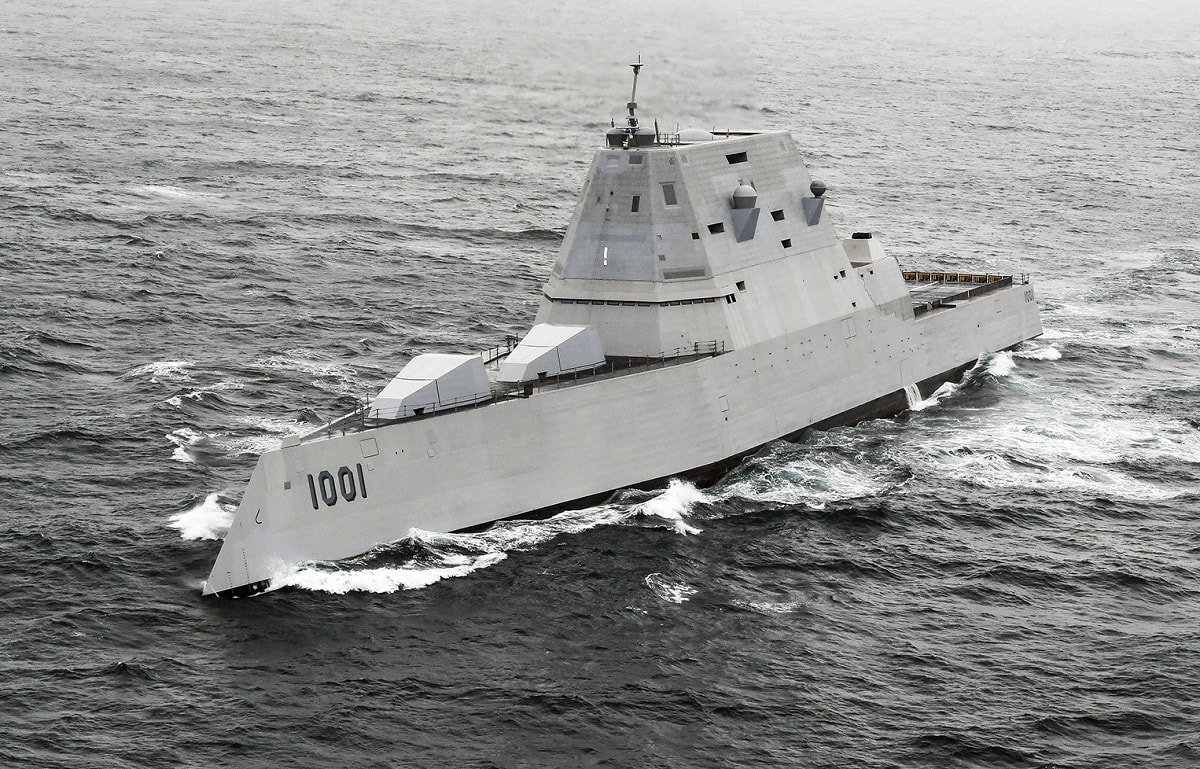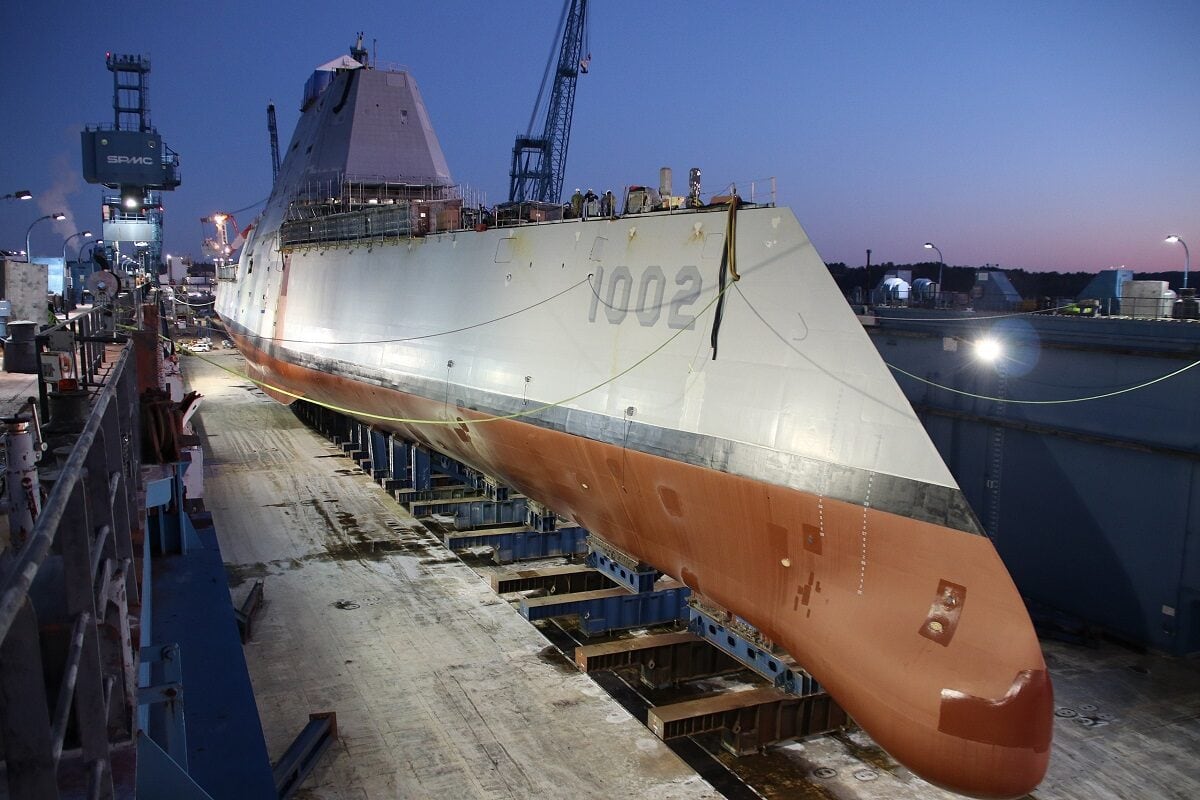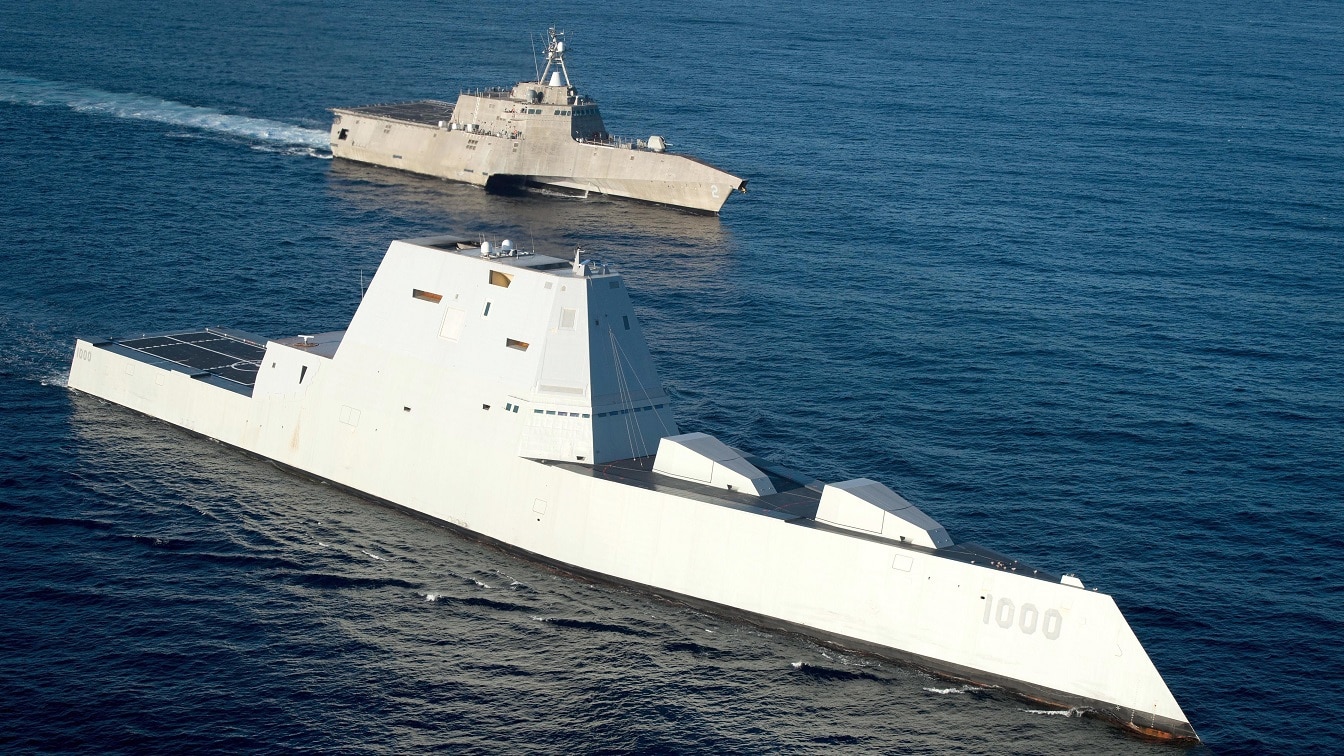The Last Zumwalt-Class Destroyer Set to Enter Service: To paraphrase the late, great Sir Winston Churchill, it isn’t the end or even the beginning of the end, but it is still an end of sorts for the U.S. Navy’s Zumwalt-class destroyers. The last of the new class of high-tech destroyers departed from Bath, Maine. Yet even as the USS Lyndon B. Johnson (DDG-1001) enters service, it is still the end of the line for what had been a planned new era of naval innovation.
Originally, 32 vessels were planned – with the $9.6 billion research and development (R&D) costs spread across the whole of the class – but the program was scaled back to 24 warships. Then it was further cut back to seven and finally just three Zumwalt-class guided missile destroyers were produced for the U.S. Navy, bringing the price tag per ship to $7.5 billion including the R&D costs. As a result, the Navy reverted to building more of the proven Arleigh Burke-class destroyers.
Zumwalt: Tremendous Failure?
As conceived, the Zumwalt-class was to be the largest and most technologically sophisticated destroyers ever built. At 610 feet long and about 81 feet wide, and displacing about 15,761 tons, the destroyers were larger than the Navy’s Arleigh Burke-class.
Despite its increased size, the sleek, wave-piercing tumblehome design of Zumwalt-class destroyers was meant to make it appear smaller on radar, while its electronic propulsion system enabled it to reach top speeds in excess of 30 knots. In addition, the warships were designed to operate with a crew of just 158 sailors, about half of the Arleigh Burke-class destroyers.
Where the problems began is that the Zumwalt-class was initially designed with a focus on land attacks, while it could take on secondary roles including surface and anti-aircraft warfare. It was also developed to be capable of performing a range of deterrence, power projection, sea control and command and control missions – while it could operate in both the open ocean and near-shore environments.
Simply put, the Zumwalt-class was meant to do it all, but in the end, it didn’t do anything all that well. It could be rightfully compared to a camel – as in a horse designed by committee.
The biggest issue was how the new class of warships was actually expected to accomplish the primary mission of land attacks. As a new generation of warships, the Zumwalt-class was designed to be fitted with two 155mm Advanced Gun Systems (AGS), which are capable of engaging targets with precision-guided shells at a range of up to 60 miles. In wartime, the destroyers could use such an ability to engage targets from close to shore to create a path for an amphibious landing. In theory, this may have seemed like a sound plan – yet the Long Range Land Attack Projectile, the precision-guided shell to be used in the AGS, ballooned in price from $50,000 to $800,000 for each round – making it simply too expensive to fire. The Navy has yet to find a replacement.
It has been suggested that the Zumwalt-class could be adapted as a platform for hypersonic missiles, but such weapons are still in the developmental stage.
In the meantime, other solutions have been considered. In late 2020, the Navy announced that USS Zumwalt (DDG-1000) had successfully executed the first live-fire test of the MK 57 Vertical Launching System with a Standard Missile (SM-2) on the Naval Air Weapons Center Weapons Division Sea Test Range, Point Mugu. The Navy said that during the tests DDG-1000 also demonstrated its capability to detect, track and engage an Anti-Ship Cruise Missile threat with a SM-2.

210421-N-FC670-1062 PACIFIC OCEAN (April 21, 2021) Zumwalt-class guided-missile destroyer USS Michael Monsoor (DDG 1001) participates in U.S. Pacific Fleet’s Unmanned Systems Integrated Battle Problem (UxS IBP) 21, April 21. UxS IBP 21 integrates manned and unmanned capabilities into challenging operational scenarios to generate warfighting advantages. (U.S. Navy photo by Chief Mass Communication Specialist Shannon Renfroe)
Much of the capabilities of the Zumwalt-class – including conventional missile strikes – have also been seen as better suited to a submarine than a surface ship, even one as potentially stealthy as the Zumwalt.
For now, the best possible use of the three cutting-edge destroyers would be in a “maritime dominance” role in the Western Pacific. While it could be far more capable in this role than the Arleigh Burke-class, it still seems the Navy is looking for a use for its expensive warships.

(Dec. 9, 2018) Following a multi-day process that includes moving the ship from the land level facility to the dry dock, the future USS Lyndon B. Johnson (DDG 1002) is made ready before the flooding of the dry dock at General Dynamic-Bath Iron Works shipyard, and subsequent launching of the third Zumwalt-class destroyer. (U.S. Navy photo courtesy of General Dynamics-Bath Iron Works/Released)
While naval history is filled with stories of great leaps forward, the Zumwalt-class could be a cautionary tale of looking forward before you leap.
Peter Suciu is a Michigan-based writer who has contributed to more than four dozen magazines, newspapers and websites. He regularly writes about military small arms, and is the author of several books on military headgear including A Gallery of Military Headdress, which is available on Amazon.com.

